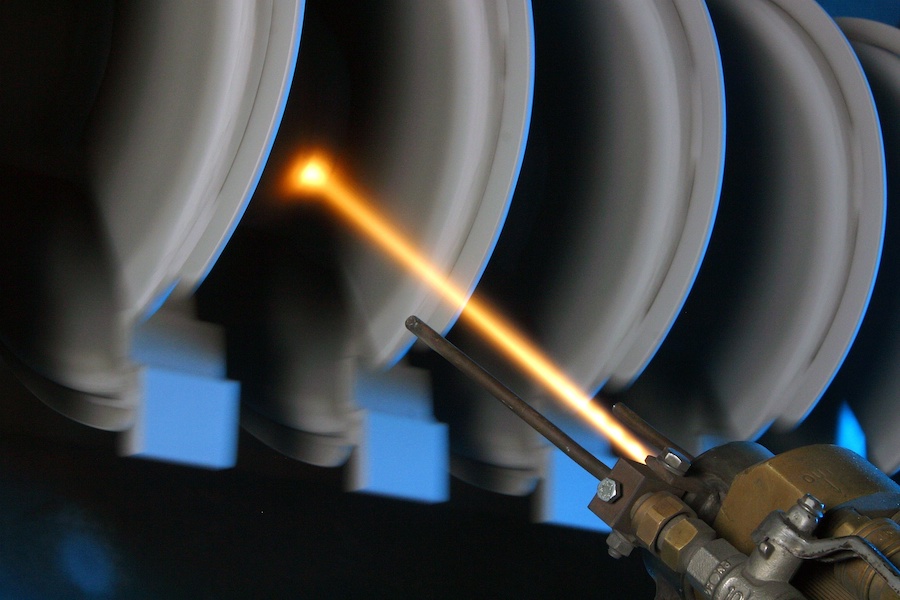
Coatings Technology Blog
Evaluating Coatings? Don’t Forget About Thermal Sprays

If you need to protect or restore a metal part, you may automatically turn to a conventional chemically deposited coating. However, thermal spray is increasingly being sought as a viable alternative to traditional coatings such as hard chrome. Thermal sprays protect a variety of metal substrates against damaging conditions and are well-suited for a long list of applications and industries. And, with the addition of polymers, they have exceptional non-stick and corrosion protection properties. For these and many other reasons, your surface protection decision shouldn’t be complete without also considering thermal sprays.
How Thermal Spraying Works
Thermal spray coatings mechanically bond to the substrate material, altering its surface properties to create a nonporous, moisture-proof composite barrier that can resist abrasion, corrosion, chemicals, cavitation, heat, erosion and wear. In addition to offering protection against various conditions, thermal spraying has many benefits. Here’s what makes Magnaplate’s Plasmadize® a desirable choice for many applications:
- Cost-effective. Thanks to robotics and other advanced processes, thermal spray deposition is typically fast and can cover a wide surface area. That means less costly downtime and more efficiency. It’s also practical for restoring parts, which can cost less than buying new ones.
- Versatility. Thermal sprays are compatible with almost any metal, and they’re used in applications across many industries such as oil and gas, aerospace, transportation, chemical processing, food machinery, machine tools, power generation, paper-making and others.
- Substantial thickness. These coatings can be applied to substantial thicknesses, extending service life. Plasmadize offers a thickness range of 0.003 to 0.025 inches.
- Low heat. In most cases, thermal spraying is appropriate for deposition onto a relatively cool substrate. Plasmadize limits the heat encountered by the substrate, and its maximum surface processing temperatures range from 250° to 275°F.
- Low coefficient of friction (COF). Plasmadize provides exceptional non-stick properties and, depending on the polymers chosen, can achieve a COF as low as 0.13 on an 8 rms surface.
- Consistent application. Plasmadize creates a consistent and repeatable finish. For recurring jobs, our programmable deposition robots ensure consistency every time.
- Other benefits. Plasmadize boasts operating temperatures up to 1,300°F, hardness beyond Rc scale, resilience under bending loads and FDA and USDA compliance.
A True Composite of Advanced Materials To Protect Your Part
To find out if a thermal spray is right for you, our engineers can review your part’s requirements and suggest your best option. Plasmadize coatings are customized using various metals, ceramics, polymers and dry lubricants to meet the needs of your application. And, they can exhibit superior properties compared to common coatings as well as other thermal spray types. Let us know your part requirements, operating environment, substrate condition and other relevant application information as early as possible so we can engineer a thermal spray coating with optimal properties.
Find out more about Magnaplate’s Plasmadize thermal spray composites.